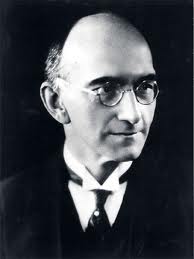Paul Rivet facts for kids
Quick facts for kids
Paul Rivet
|
|
|---|---|

Paul Rivet in 1938
|
|
| Born | 7 May 1876 Wasigny, Ardennes
|
| Died | 21 March 1958 (aged 81) |
| Nationality | French |
| Known for | Musée de l'Homme Comité de vigilance des intellectuels antifascistes |
| Spouse(s) | Mercedes Andrade Chiriboga |
| Scientific career | |
| Fields | Ethnology |
Paul Rivet (born May 7, 1876 – died March 21, 1958) was a French scientist. He was an ethnologist, which means he studied different cultures and peoples. Paul Rivet is famous for starting the Musée de l'Homme (Museum of Mankind) in Paris in 1937. He also had a theory that people from Australia and Melanesia sailed to South America a long time ago. He was married to Mercedes Andrade Chiriboga from Ecuador.
Contents
Early Life
Paul Rivet was born in a town called Wasigny, in France, in 1876. He went to school and university to become a doctor.
A Life of Discovery
Even though he trained as a doctor, Paul Rivet became very interested in studying people and cultures.
Exploring South America
In 1901, Paul Rivet joined a French science trip to Ecuador in South America. This trip was to measure parts of the Earth. He stayed in South America for five years. There, he met Federico González Suárez, who was a bishop, historian, and archaeologist.
Rivet became very interested in the indigenous peoples (native people) of the area. He started studying the Huaorani people in the Amazon rainforest in Ecuador. He also collected different types of amphibians and reptiles during his time there.
When he returned to France, Rivet began working at the Muséum national d'histoire naturelle (National Museum of Natural History). He wrote many papers about his research in Ecuador. Later, he wrote a big book with René Verneau called Ancient Ethnography of Ecuador.
Building Museums and Institutes
In 1926, Rivet helped create the Institut d'ethnologie (Institute of Ethnology) in Paris. He worked with other famous thinkers like Marcel Mauss. They wanted this institute to bring together different studies like philosophy, ethnology, and sociology. Rivet taught many future ethnologists.
In 1928, he became the director of the National Museum of Natural History. He kept working to create places where people could study humankind. In 1937, he founded the Musée de l'Homme in Paris. This museum became very well known for its research and collections about different cultures.
During World War II, in 1942, Rivet went to Colombia. There, he started the Anthropological Institute and Museum. After the war, he returned to Paris in 1945. He continued teaching and doing his research. He also studied the Aymara and Quechua languages of South America, bringing new ideas about them.
Standing Up for What's Right
Paul Rivet also got involved in politics. He was worried about the rise of Fascism in Europe in the 1930s. Fascism is a type of government where one leader has total power and often controls people's lives strictly.
After big riots in Paris in 1934, Rivet helped start the Comité de vigilance des intellectuels antifascistes. This was a group of smart people who were against fascism. Rivet was also a leader in the French Resistance. This was a secret group that fought against the Nazi occupation of France during World War II. He was almost caught by the Nazis, but he managed to escape. Sadly, some of his friends and colleagues were not as lucky.
Understanding Languages
Paul Rivet is well known for how he grouped the many languages of South America. He suggested there were 77 language families and about 1240 different languages and dialects. Other scientists, like John Alden Mason, later used much of his work on language classification.
How People Came to America
Rivet's main idea was that the first Indigenous people of the Americas originally came from Asia. However, he also believed that some people traveled to South America from Australia about 6,000 years ago. He thought others came from Melanesia (islands in the Pacific Ocean) a bit later. He wrote a book in 1943 called Les Origines de l'Homme Américain (The Origins of the American Man). In this book, he used language studies and other facts about people to support his ideas.
Honored for His Work
Paul Rivet's name is used in the scientific names of two animals from South America: a snake called Leptophis riveti and a frog called Pristimantis riveti. This is a way to honor his contributions to science.
Books by Paul Rivet
- with René Verneau, 1921-1922. Ancient Ethnography of Ecuador.
- 1923. L'orfèvrerie du Chiriquí et de Colombie. (Goldwork of Chiriquí and Colombia)
- 1943. Los origenes del hombre Americano. (The Origins of the American Man)
- 1960. Maya cities: Ancient cities and temples.
- with Freund, Gisèle, 1954. Mexique précolombien. (Pre-Columbian Mexico)
See also
 In Spanish: Paul Rivet para niños
In Spanish: Paul Rivet para niños

